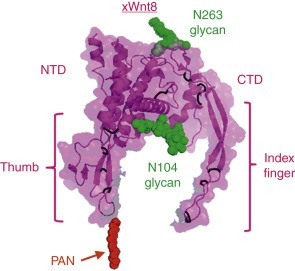What is WNT1 Protein?
The WNT1 protein is a multifaceted biomolecule, whose discovery, structure and specialised functions offer unique insights into the cellular physiological processes. Alongside its numerous applications in the biomedical field, WNT1 is also implicated in several diseases, underscoring the significance of understanding this complex protein.
Background and Discovery of WNT1 Protein
In the late 1980s, Harold Varmus and Roel Nusse discovered the WNT1 protein. Initially, they identified this biomolecule as a mammary oncogene in mice. The term "WNT" is an amalgamation of the names of two homologous genes: "Wg" (wingless) from Drosophila and "INT1" from mouse. Researchers later discovered that the WNT1 protein is encoded by the WNT1 gene, which is located in a crucial position in the human genome, i.e., on chromosome 12q13.
What Is The Structure of WNT1 Protein?
The structure of the WNT1 protein is complex. It consists of 343 amino acids and is a member of the wingless-type MMTV integration site family, mainly comprising glycoproteins. This protein has several conserved cysteine residues that lead to intramolecular disulfide bonds, contributing to its complex tertiary structure. Furthermore, it also has a palmiteoylation site at a conserved serine residue which is critical to its function.

Fig1. Wnt1 Protein
What Is The Function of WNT1 Protein?
The primary function of the WNT1 protein is in embryonic development. It is critical in patterning and cell differentiation processes where it fosters cellular differentiation into appropriate cell types, aids the development of the central nervous system, and promotes bone formation. Moreover, WNT1 protein also plays a vital role in regulating the self-renewal of hematopoietic stem cells.
WNT1 protein related signal pathway
The WNT1 protein triggers several signaling pathways, the most eminent being the WNT/β-catenin or canonical pathway. In this pathway, WNT1 binds to the Frizzled/LRP5/6 receptor complex, decreasing the degradation of β-catenin. The stabilized β-catenin then translocates to the nucleus, interacts with TCF/LEF transcription factors, and triggers the transcription of WNT target genes. The activation of this pathway primarily regulates cell proliferation, differentiation, and migration. In addition to the canonical pathway, non-canonical WNT pathways involving WNT1 have also been discovered, which impact processes like cell polarity and movement.
WNT1 protein related diseases
Numerous diseases are associated with the WNT1 protein. Overexpression of WNT1 is commonly seen in several types of cancer, including breast, gastric, and colon, making it a prime subject for cancer research. WNT1 mutations are also linked to early-onset osteoporosis and Osteogenesis Imperfecta (OI), indicating the protein's critical role in bone homeostasis. Furthermore, research has suggested a potential link between dysregulated WNT1 protein and neurodegenerative diseases like Alzheimer's.
WNT1 protein's applications in biomedical
The WNT1 protein's role in various physiological processes and disease states has led to its notable application in the biomedical field. For instance, in cancer research and treatment, WNT1 can serve as a diagnostic biomarker, and targeting the WNT1 pathway could provide a potential therapeutic strategy. Further, the WNT1 protein's role in bone formation has led to exploring its potential in treating bone disorders and improving bone regeneration techniques. Lastly, understanding the implication of WNT1 in Alzheimer's disease could pave the way for new therapeutic interventions in neurodegenerative disorders.
In conclusion, the WNT1 protein, owing to its critical role in essential cellular and developmental processes, is a protein of immense biological significance. Its various associations with diseases raise intriguing questions about its functions, which could lead to the development of novel therapeutic interventions. Despite the existing challenges in understanding this protein, ongoing research continues to decode the mysteries surrounding WNT1, progressively enhancing its potential in the biomedical field.
Our Featured Products
| Cat.No. | Product Name | Species | Source (Host) | Tag |
|---|---|---|---|---|
| WNT1-18563M | Recombinant Mouse WNT1 Protein | Mouse | Mammalian Cell | His |
| WNT1-10190M | Recombinant Mouse WNT1 Protein, His (Fc)-Avi-tagged | Mouse | HEK293 | His (Fc)-Avi |
| Wnt1-5875M | Recombinant Mouse Wnt1 protein, His&Myc-tagged | Mouse | E.coli | His&Myc |
| Wnt1-001M | Active Recombinant Mouse Wnt-1/sFRP-1 Complex Protein | Mouse | CHO Cell | N/A |
Reference
- C. Liu, ... X. He, in Encyclopedia of Cell Biology, 2016, Functional Cell Biology.

